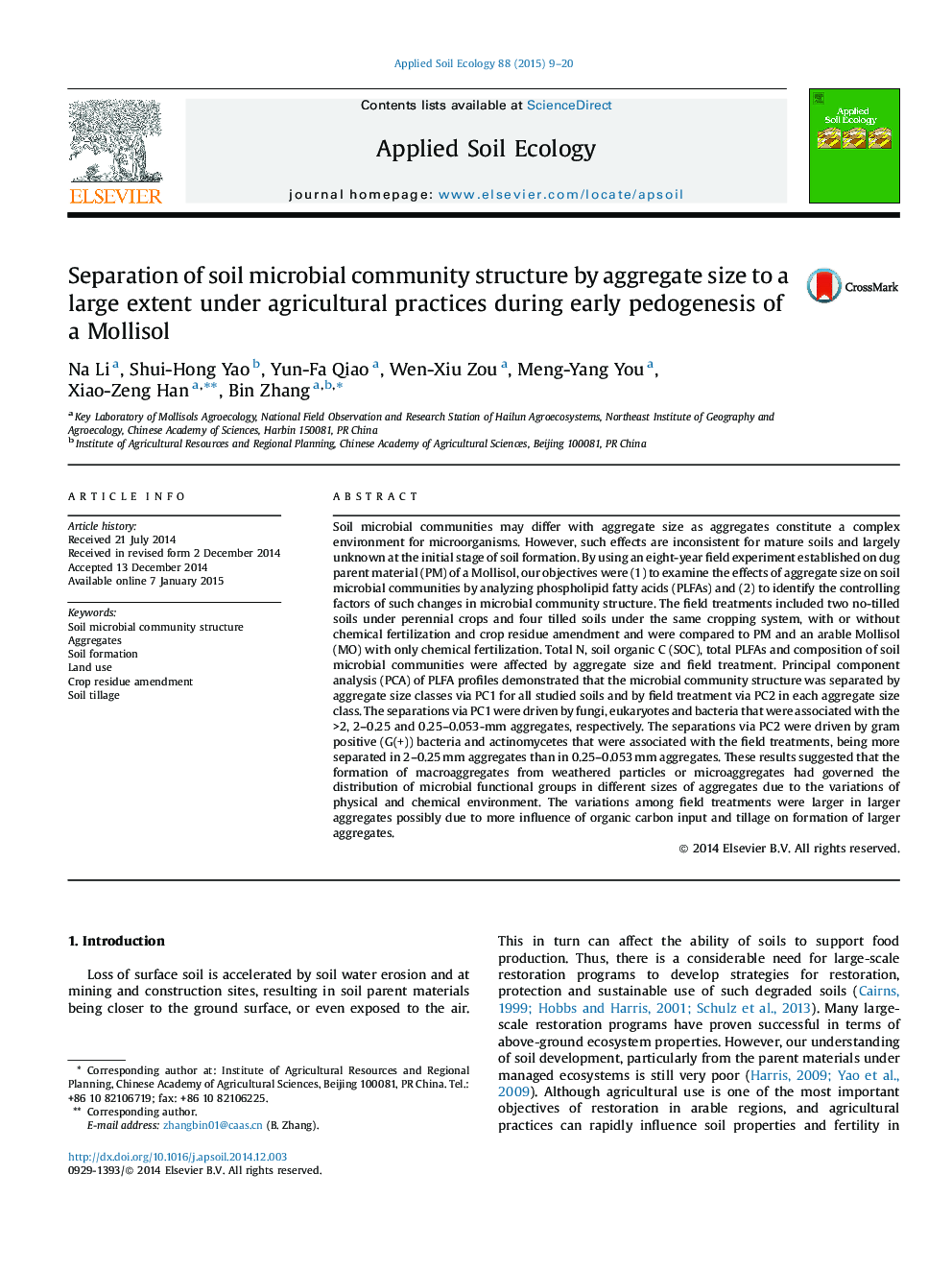| کد مقاله | کد نشریه | سال انتشار | مقاله انگلیسی | نسخه تمام متن |
|---|---|---|---|---|
| 4382113 | 1617795 | 2015 | 12 صفحه PDF | دانلود رایگان |
• Young soils developed for eight years from the parent material of a Mollisol under different agricultural practices were compared.
• Microbial community structure was separated to a larger extent by aggregate size than in mono cropped soils.
• Microbial community structure separated among field treatments was larger in macro-aggregates than in micro-aggregates.
• Soil aggregation controls development of microbial compositions in differently-sized aggregates at the initial stage of soil development
Soil microbial communities may differ with aggregate size as aggregates constitute a complex environment for microorganisms. However, such effects are inconsistent for mature soils and largely unknown at the initial stage of soil formation. By using an eight-year field experiment established on dug parent material (PM) of a Mollisol, our objectives were (1) to examine the effects of aggregate size on soil microbial communities by analyzing phospholipid fatty acids (PLFAs) and (2) to identify the controlling factors of such changes in microbial community structure. The field treatments included two no-tilled soils under perennial crops and four tilled soils under the same cropping system, with or without chemical fertilization and crop residue amendment and were compared to PM and an arable Mollisol (MO) with only chemical fertilization. Total N, soil organic C (SOC), total PLFAs and composition of soil microbial communities were affected by aggregate size and field treatment. Principal component analysis (PCA) of PLFA profiles demonstrated that the microbial community structure was separated by aggregate size classes via PC1 for all studied soils and by field treatment via PC2 in each aggregate size class. The separations via PC1 were driven by fungi, eukaryotes and bacteria that were associated with the >2, 2–0.25 and 0.25–0.053-mm aggregates, respectively. The separations via PC2 were driven by gram positive (G(+)) bacteria and actinomycetes that were associated with the field treatments, being more separated in 2–0.25 mm aggregates than in 0.25–0.053 mm aggregates. These results suggested that the formation of macroaggregates from weathered particles or microaggregates had governed the distribution of microbial functional groups in different sizes of aggregates due to the variations of physical and chemical environment. The variations among field treatments were larger in larger aggregates possibly due to more influence of organic carbon input and tillage on formation of larger aggregates.
Journal: Applied Soil Ecology - Volume 88, April 2015, Pages 9–20
